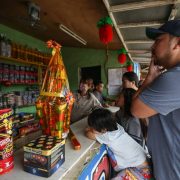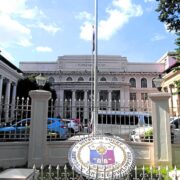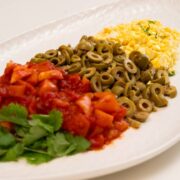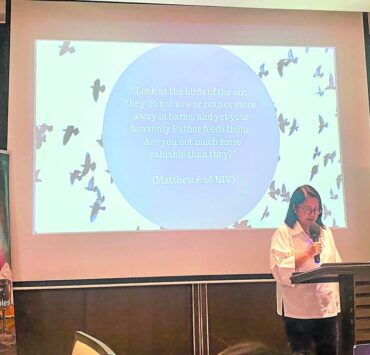Lost in a new Palo Alto
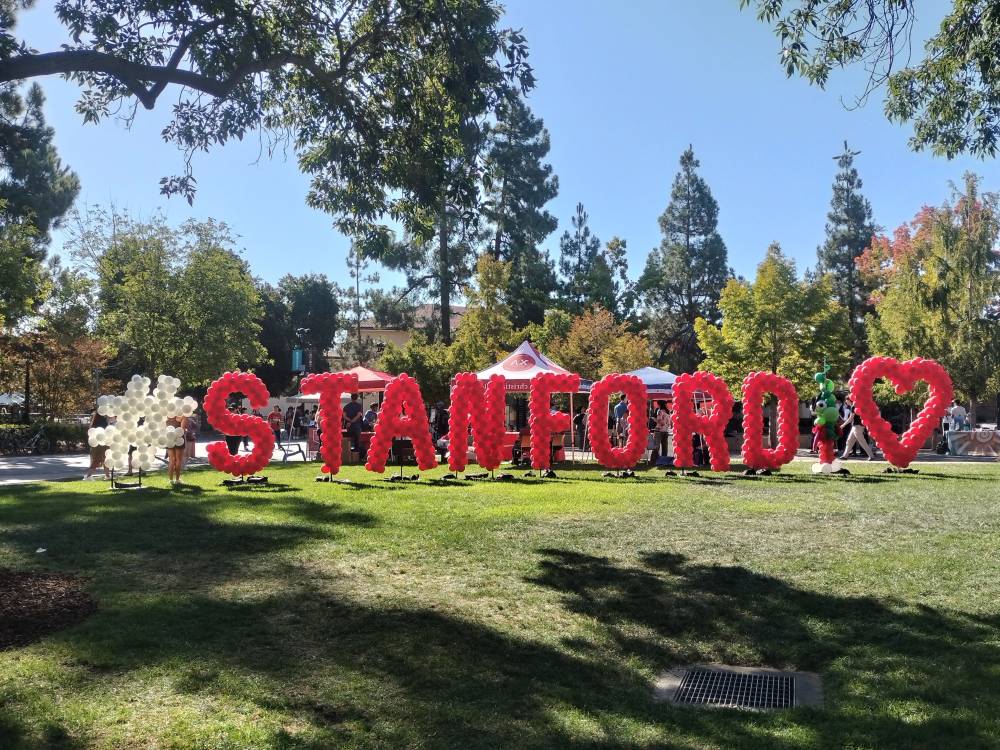
My refusal to accept that change is life’s only immutable variable was swiftly met with lessons one September afternoon when I boarded a Marguerite in Palo Alto, California.
The first lesson went like this: “In searching for the familiar, you’ll be confronted with the unfamiliar.” The little red Marguerite, Stanford University’s free shuttle service of my memories, has been replaced by an enormous low-floor bus. Obviously, it meant that the driver Al was gone, too, since it’d been decades since I boarded his red van.
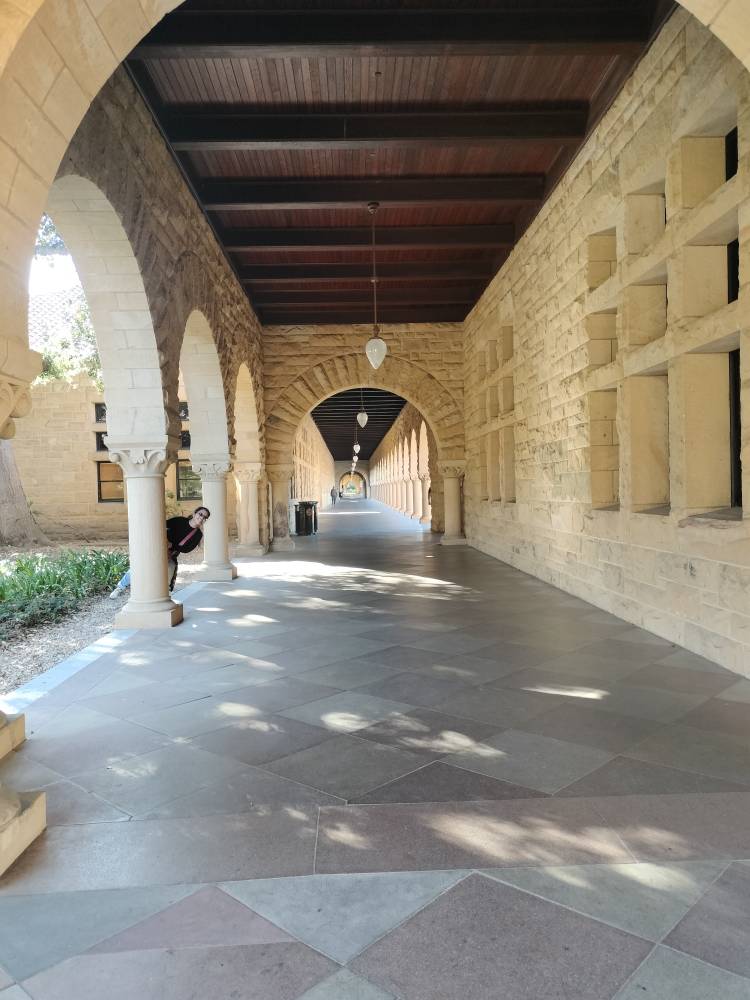
The second lesson was “the sadness of the unfamiliar is bearable with acceptance.” Touring Palo Alto now, I fully embraced dépaysement, or the feeling that I was out of my element in an unfamiliar Palo Alto.
“Welcome to the San Francisco 49ers fans! If you’re not, wait for the next one,” Al teased the new passengers boarding his Marguerite. His favorite football team had won the Super Bowl the night before.
Al was one of the few Marguerite drivers who exuded humor and bonhomie. He drove the red van in the late 1980s to and from the Stanford campus, including Escondido Village, the university’s housing area for graduate students, to Stanford Shopping Center (aka Stanford mall). Like clockwork, he’d trundle down to the bus stop in the afternoon where I’d be waiting after going around the mall.
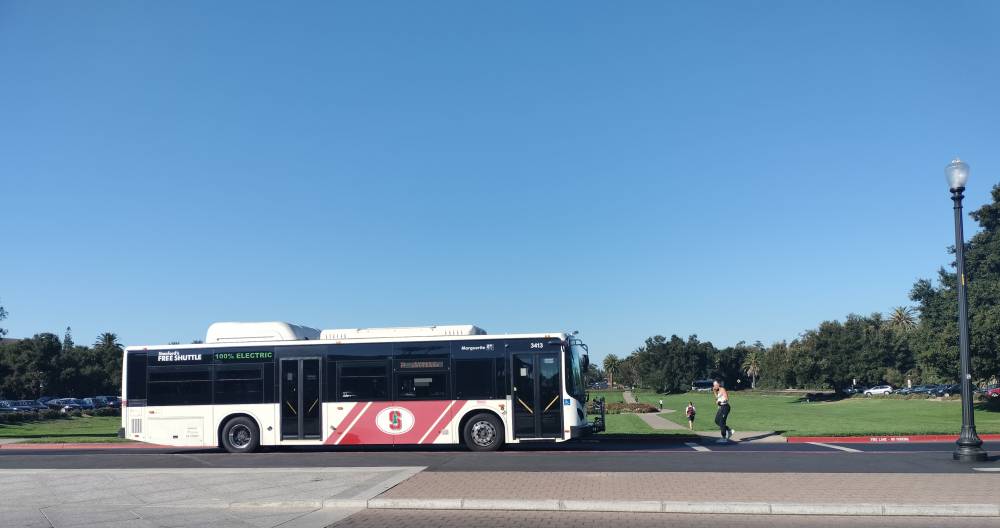
‘Next stop, please’
Riding the Marguerite for the first time from Escondido, I wondered: How did one get off? Then I heard my mother tell the driver, “Next stop, please.” But no one says that anymore; on the “new” Marguerite, a passenger preparing to alight presses a red button and a “stop requested” sign flashes on the overhead LED display near the entrance.
Stanford University has always provided free transportation service, per records. From the 1880s to 1909, a horse and 12-person buggy service took people to and from the train station across El Camino Real. In 1929, horse carriages were replaced by electric streetcars, which, in turn, were superseded by a private bus service after the tracks were removed for a road-widening project.
In 1973, with the establishment of the Valley Transportation Authority, Stanford started the shuttle service around campus, the two local train stations and downtown Palo Alto. Interestingly, the Marguerite shuttle system was named after the horse of the carriage that Asa “Uncle John” Andrew used.
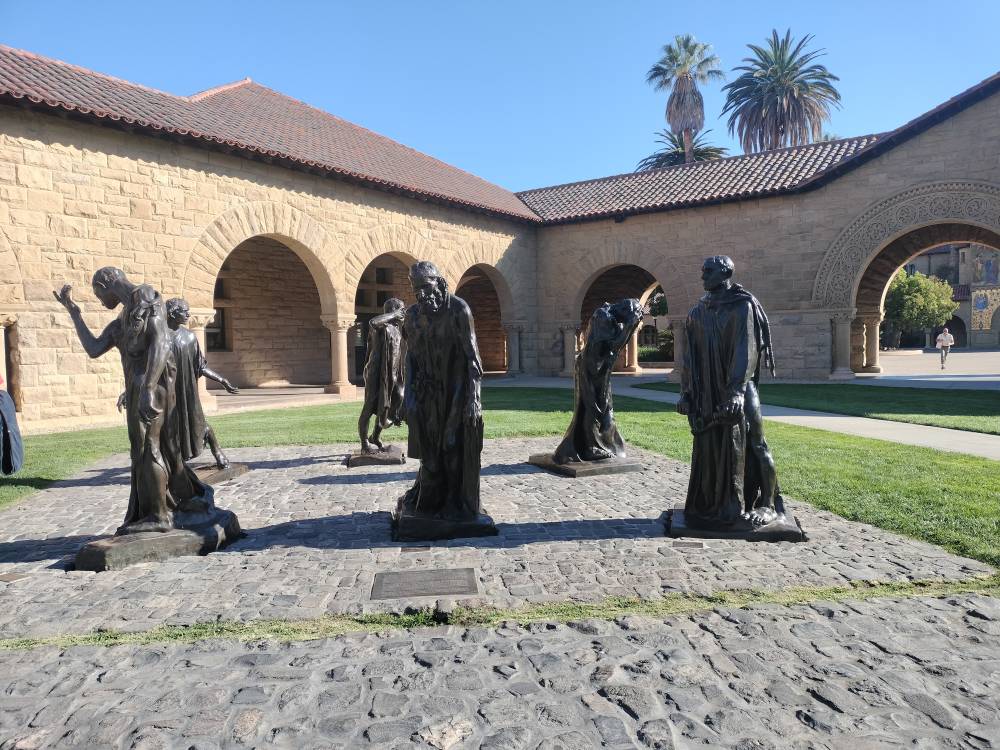
Contributions from Hewlett Foundation, Lucile Packard Children’s Hospital, Palo Alto Medical Foundation, Stanford Medical Center, Stanford Shopping Center, etc. help operate the current shuttle services, including to Stanford Medical Center and shopping center.
Learning the routes of the blue, green and purple Marguerite lines was important to get around the university and Palo Alto. It was the first thing my mother taught me and my father when we arrived to join her and my sister in Escondido.
(Mama had been granted a John S. Knight Fellowship for Professional Journalists at the university for the academic year. The program encourages overseas fellows to bring their families, and she and my sister flew there ahead so my sister would not miss enrollment at Palo Alto High School. Pop and I flew in months later; he took leave from his teaching post at the state university while I went on my gap year from college.)
In those days, it was important to always clarify which Palo Alto you lived in. We were based in Palo Alto, not in East Palo Alto, the twin city with a reputation associated with life-threatening situations.
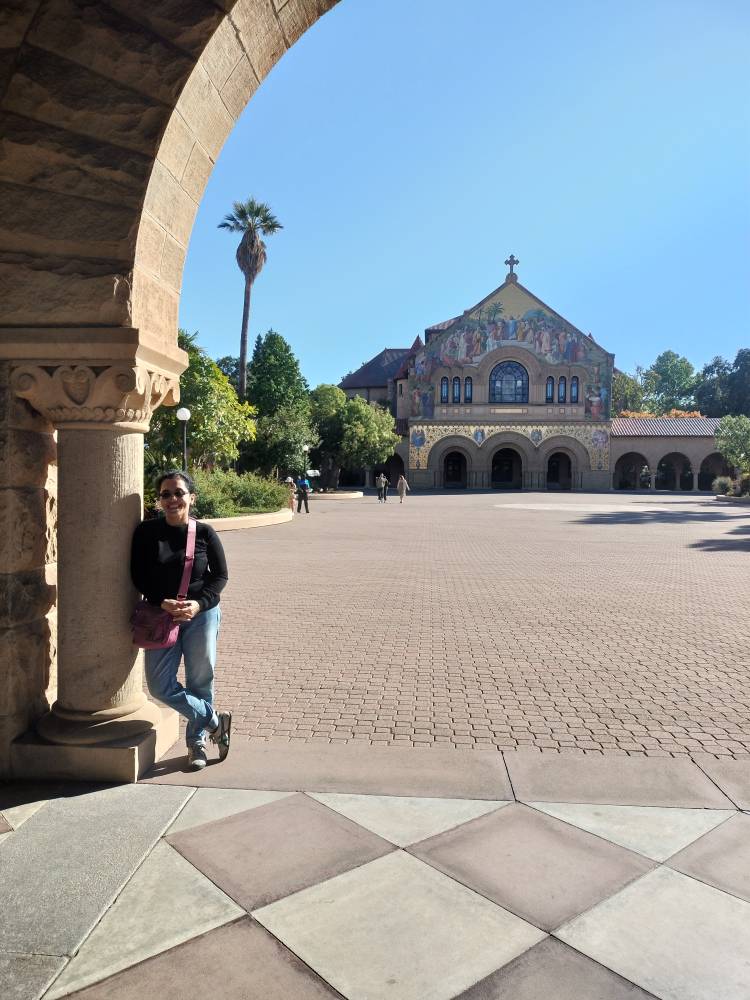
“It was the murder capital when you were first here!” Charro Jambalos, a longtime Palo Alto resident and retired nurse, exclaimed over dinner. She said she felt uneasy every time her filmmaker husband, Michael Levin, went to East Palo Alto for work. At that time, my friend Sheila Casper, the statuesque, blue-eyed manager of Cookie Habit, had the same negative sentiment, reckoning that the man who tried to rob the shop was definitely from East Palo Alto.
But that’s all in the past. Now, major businesses like Amazon, Ikea, Four Seasons Hotel and Nordstrom are operating in East Palo Alto, and condo buildings have risen across the city. Significantly, the violent-crime rate had dropped from the 60-percent 1990s level by 2017, with only one murder reported in that year. In 2023, the murder rate in the city was zero (cbsnews.com).
Unfamiliar ground
Stanford mall has become unfamiliar ground with the old shops that I knew gone, like Crabtree & Evelyn with its perfumes. Coop, a huge market, has folded up along with Radio Shack and the Indian-owned store selling silver jewelry next to Cookie Habit, which, too, is now but a memory. The cupcake shop Sprinkles stands where Gap and Cookie Habit were. Gap has relocated to the center of the mall.
The landscape is now filled with high-end stores—Wilkes Bashford, Hermès, Louis Vuitton, Tiffany & Co—with their low signages and earthy or monochrome hues. And parking garages now stand on the once flat parking lots.
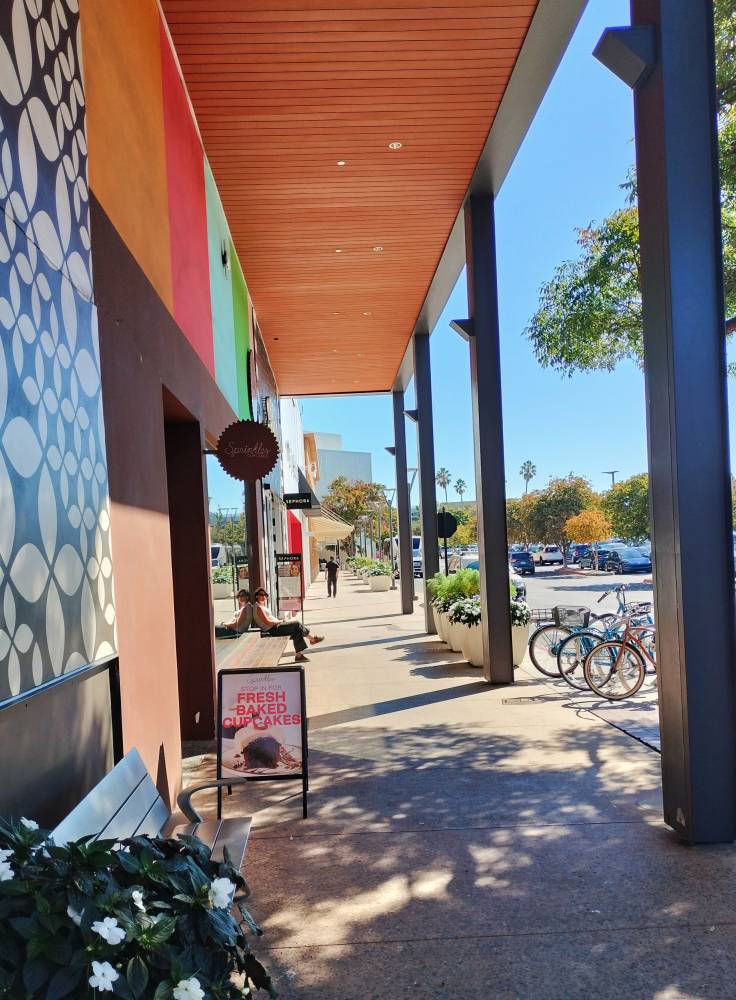
Still, the mall remains charming with its open-air concept, which bears comparison with the Philippines’ Ayala Malls. The layout isn’t confining; it invites both shoppers and promenaders to enjoy the cool, sunny weather.
When he wasn’t in the library and I wasn’t minding our neighbor’s child, Pop and I took the Marguerite regularly to Stanford mall. Cookie Habit was a favorite place, with its wonderful smell of cookies (short bread, chocolate chip and its varieties, oatmeal raisin) and fudge brownies neatly arranged on the main display counter when the mall opened exactly at 10 a.m. On the side counter was a list of the bagged day-old cookies and brownies selling for $1.
Ages ago, Stanford mall was simply a mall simultaneously frequented by the well-heeled, the employed and certain pretentious immigrants. Bus drivers bought Cookie Habit’s bags of day-olds and coffee. Ladies of leisure began shopping at 10 a.m., once attempting to pay for $2 cookies with a check that Sheila refused to accept. For some reason, young and youngish Filipino immigrants turned snobbish when they saw or heard a Filipino in their midst.
One afternoon, a child was screaming nonstop at the mall. Following the direction of the scream, we chanced upon people encircling a distraught mother who was repeatedly saying, “I didn’t buy him the toy he wanted because it was expensive!” while her son flailed around on the ground. Apparently, someone would have reported her to Child Protective Services if she held her son and told him to stop his tantrum.
Meanwhile, through Cookie Habit’s window, a tall, unkempt man reached over and opened the cash register. Sheila, quick as a fox, stopped him just as he was about to scoop up the cash. He left the scene with his tail between his legs just as Pop and I walked into the shop.
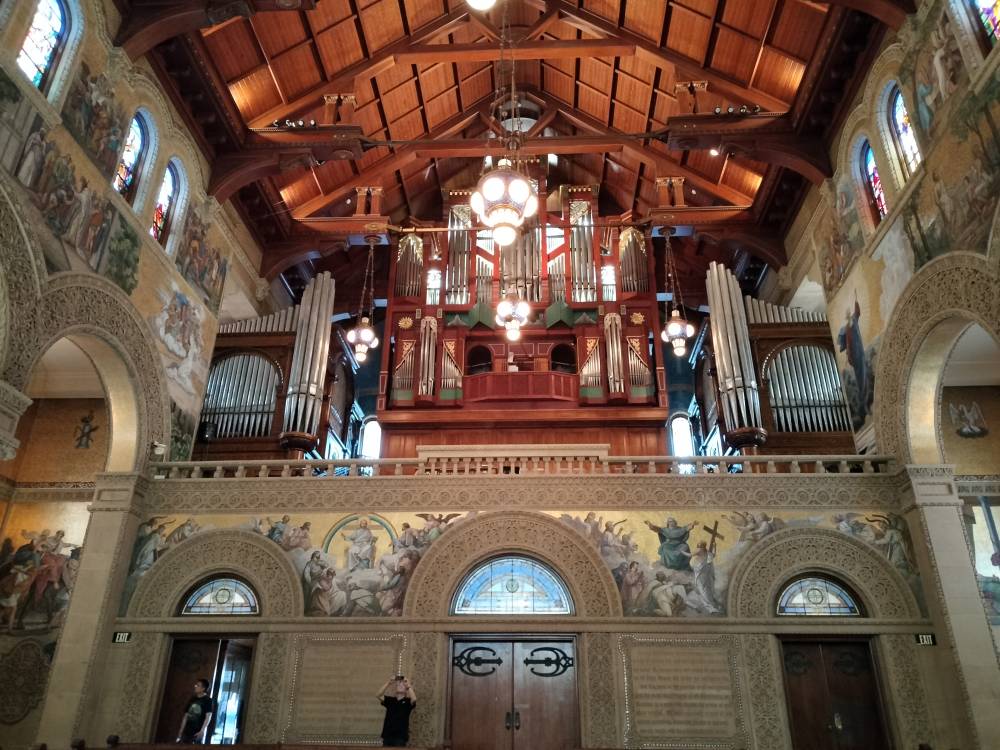
Walking around campus
In an alternate universe I would have been a visiting Stanford alumnus. Nonetheless, any student or tourist would find it energizing to walk around Stanford, which ranks second after Princeton University on Forbes’ 2024-2025 Top Colleges’ List. Leland and Jane Stanford cofounded the university in 1885 to honor their only son Leland Jr. who, at 15 years old, died of typhoid fever in 1884. It opened in 1891 with about 555 students, admitting men and women from all backgrounds.
Stanford University Bookstore—another of my family’s old favored haunts—now resembles a mini department store selling apparel (including Lululemon yoga clothes), school supplies and anything that can be embossed with the Stanford logo, including souvenirs that have gone beyond, but still comprised, the usual mugs, tumblers and tote bags. The books are now on the second floor.
Near the bookstore is Tressider Union, where the administrative offices are and where students meet. I remembered it as teeming with students walking or zipping through on their bicycles, and munching on humongous pizza slices. The place is now noticeably commercial with the appearance of Starbucks, Subway, and Panda Express.
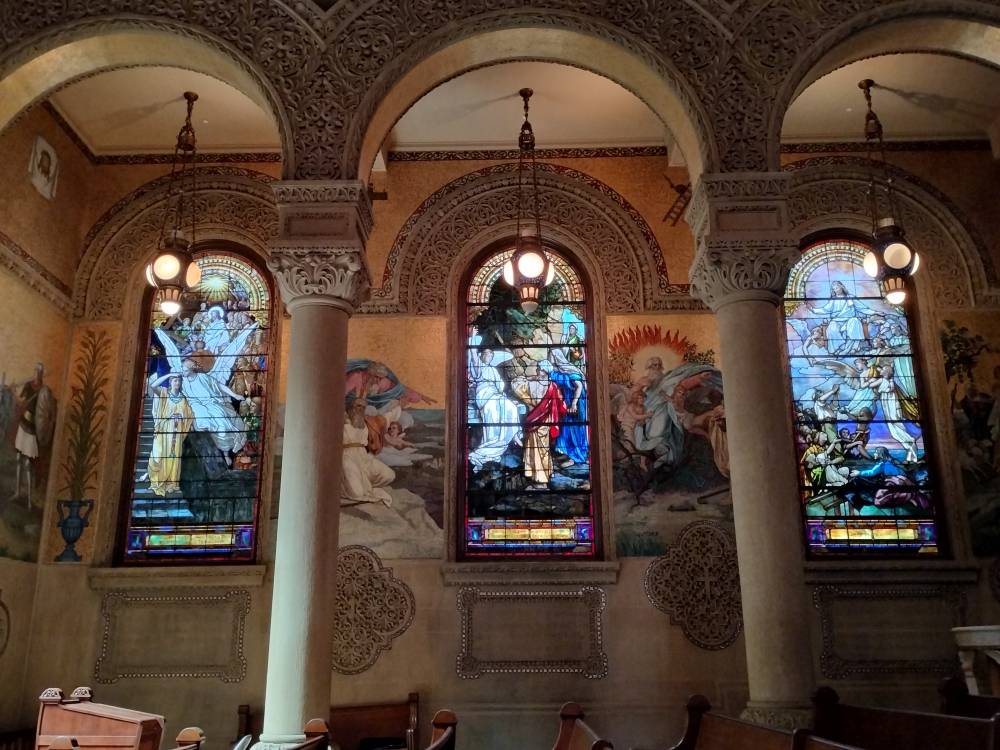
From Tressider Union I walked to Stanford Memorial Church, which I stared at in awed silence when I first visited, whimsically thinking it would be wonderful to get married in, being nondenominational. According to the historical marker, Jane Stanford had it constructed by European and North American artisans as a tribute to her husband. It features mosaics, pipe organs, and 140 three-layered stained-glass windows.
In the summer of 2021, it was reported that the Lilies of the Field window at the front of the church was shattered when wine bottles were thrown at it with great force. The window was restored months later.
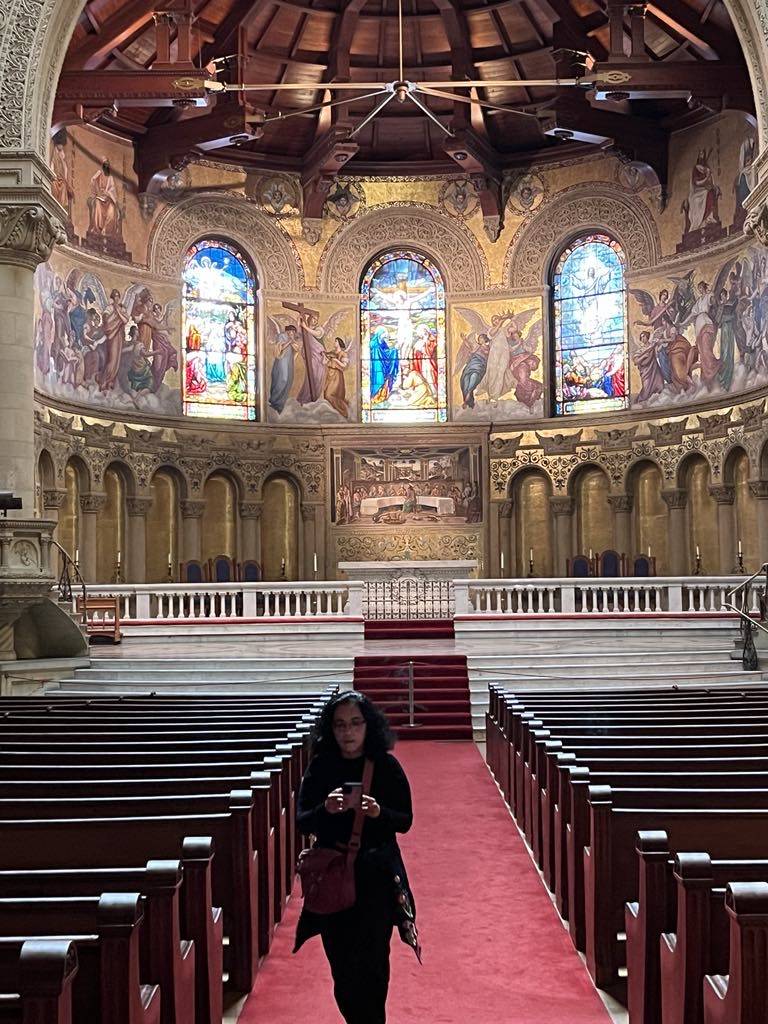
From the church, across the main quad and memorial court, is the Oval with its green carpet and Stanford “S” in flowers. I remember seeing students soaking in the sun in the summer. But now, in the fall, it was empty.
It’s sad that only traces of the Palo Alto I know remain. Finding out that Cookie Habit is gone felt like a breakup with a friend. It was equally saddening seeing a different Marguerite pull up at the bus stop (the red van was more endearing).
But the universe wasn’t done teaching, and dropped the final lesson: “New memories can be made.” Quite true. Taking the Caltrain to San Francisco is exciting. Walking to The Bayland Nature Reserves hold a promise of birds gliding through the major migratory stopover on the Pacific Flyway. And heading to Mitchell Park Library, or sipping mocha latte at Ada’s Café opposite the library, when you want to be alone, is a fail-safe plan.










